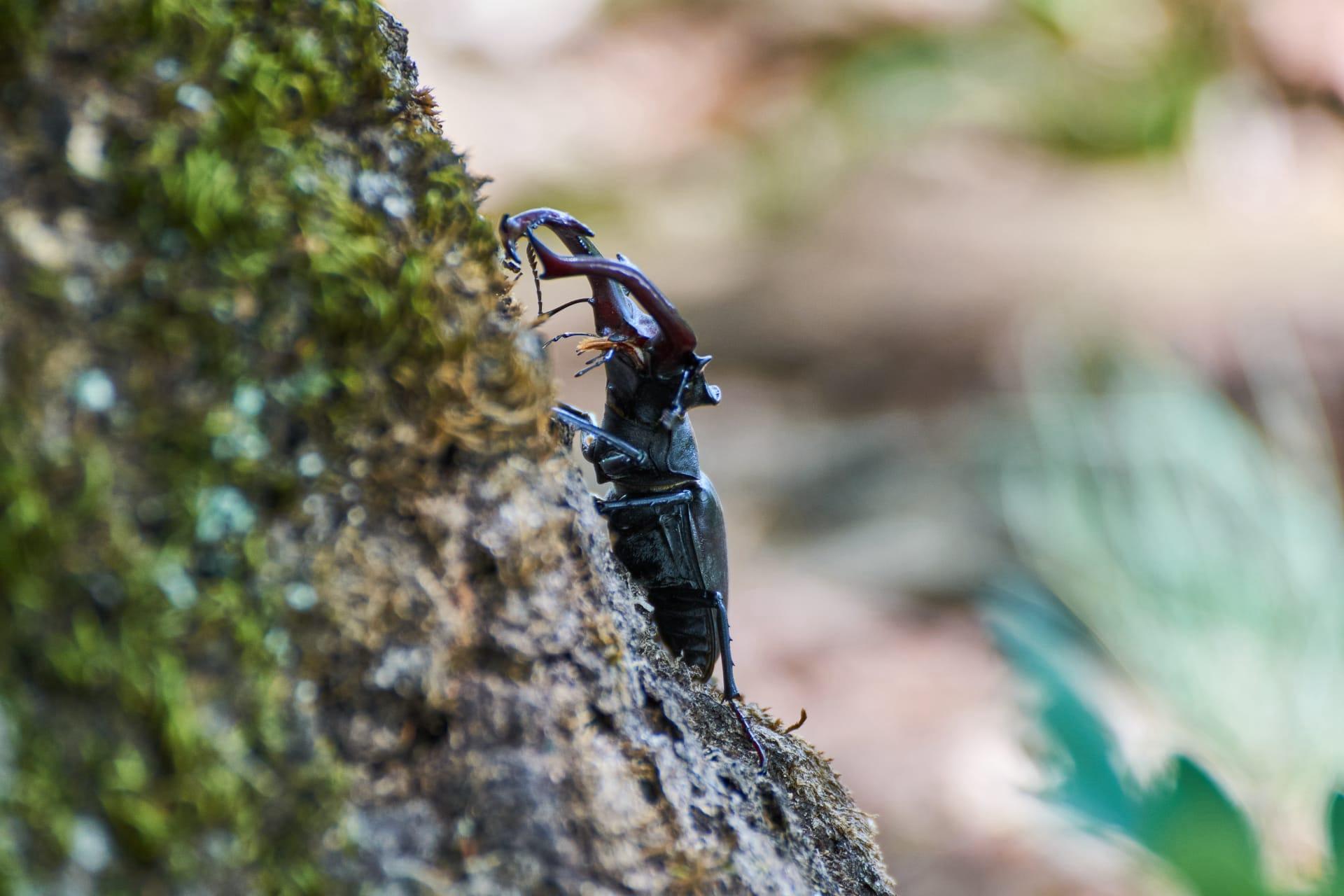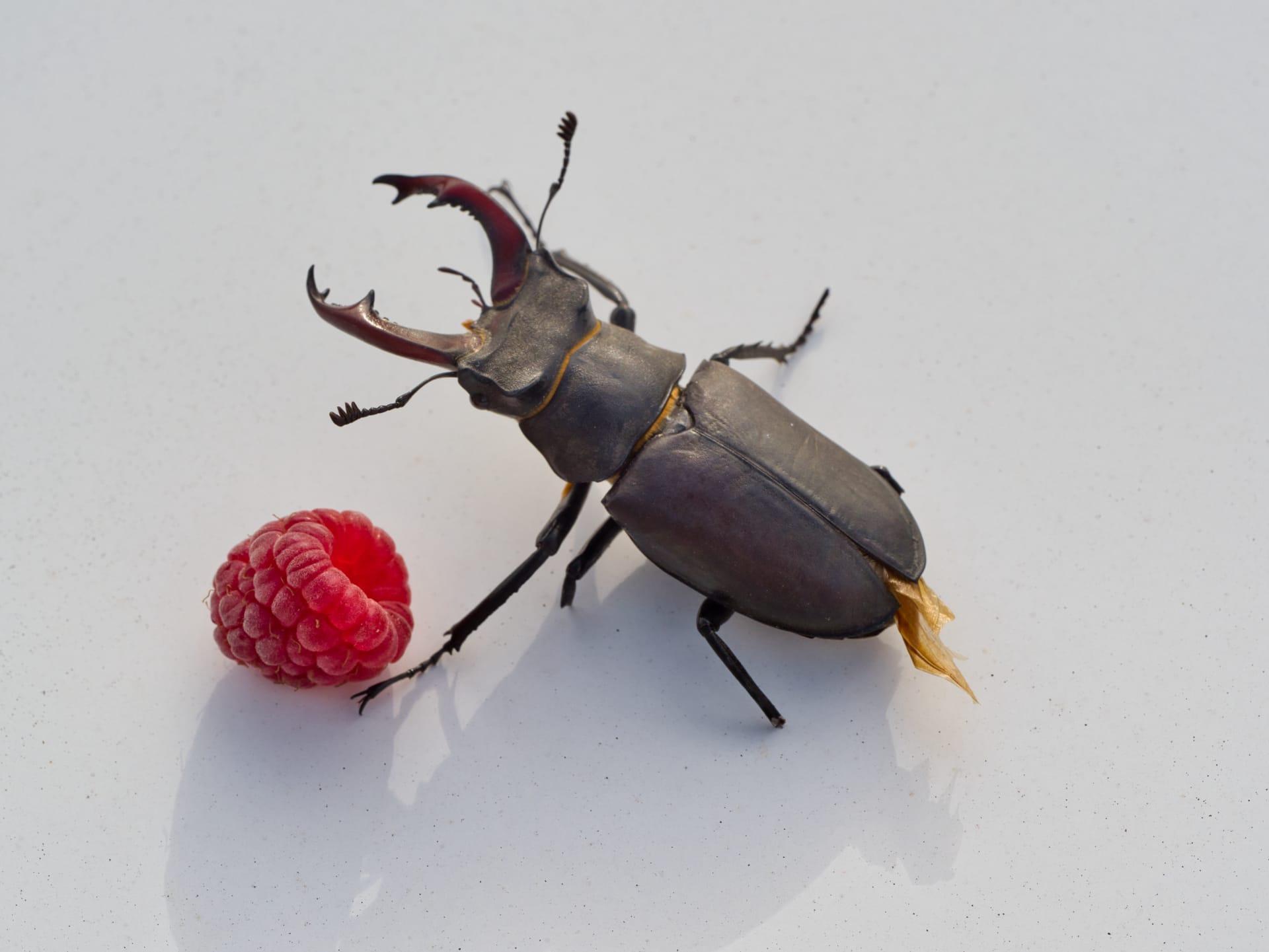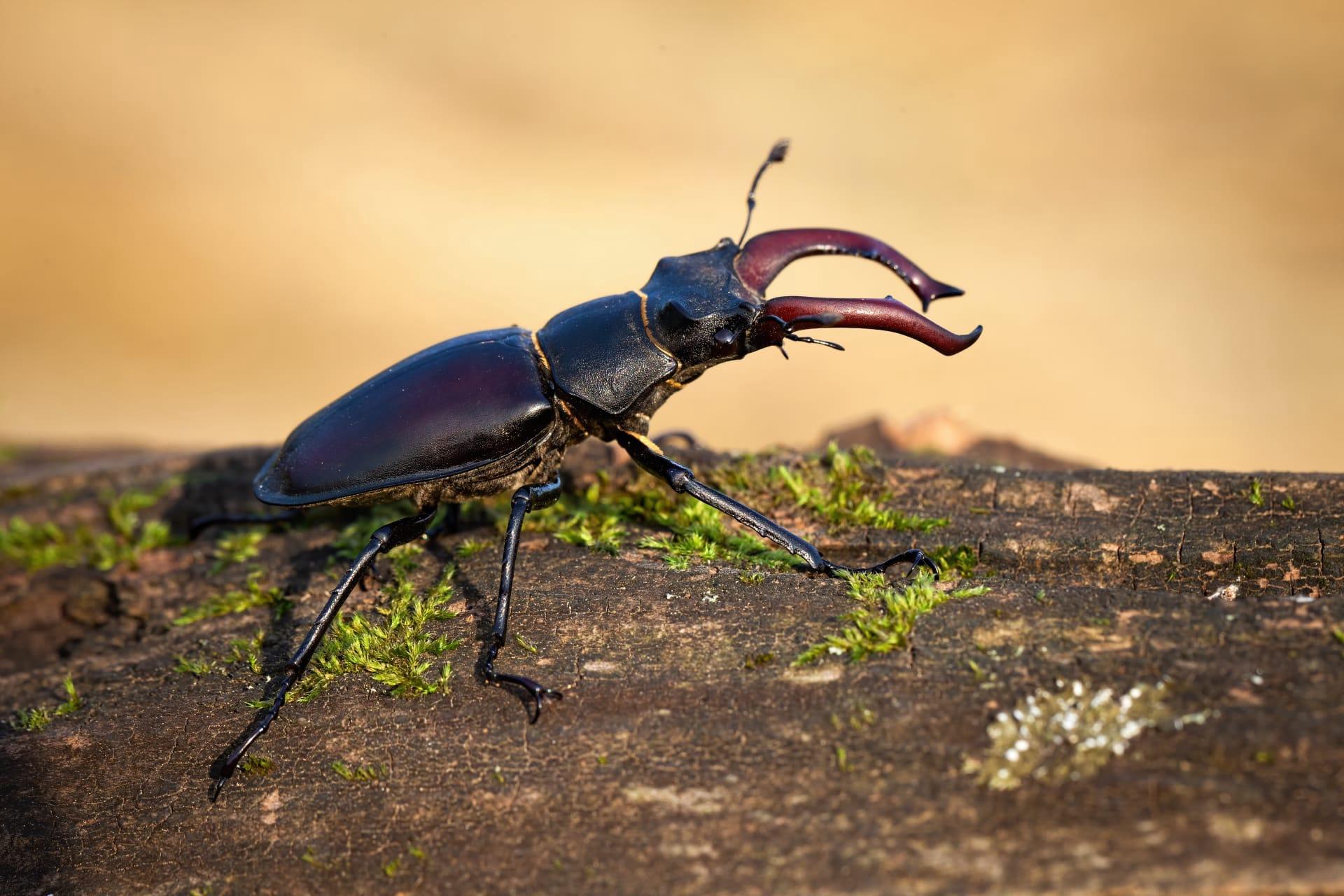Stag Beetle Characteristics
- Home /
- Mini Encyclopedia /
- Animal /
- Stag Beetle Characteristics
1
Stag beetles, known scientifically as Lucanus cervus, are remarkable for their distinctive physical characteristics. Adult males typically range from 2 to 3 inches in length, while females are generally smaller, about 1 to 1.5 inches. They boast a lifespan that's quite impressive for insects, living up to 7 years in some cases. Predominantly, their lifespan in the wild averages around 3 to 4 years, influenced by environmental factors and predation.
The most standout feature of stag beetles is undoubtedly their oversized mandibles, resembling deer antlers – hence their name. In males, these mandibles can be as long as their bodies and are used for wrestling with rival males during mating season. Despite their formidable appearance, these mandibles are not used for biting or eating; rather, stag beetles primarily use them for display and combat. In contrast, females have much smaller mandibles, more suited for their lifestyle, which involves less combat and more foraging.

2
Question: Why do stag beetles have such large mandibles?
Answer: The large mandibles of male stag beetles serve a crucial role in their mating rituals. They are used to wrestle and overpower other males to win over a female for mating. This display of strength and dominance is a key factor in their reproductive success. Despite their intimidating size, these mandibles are not particularly effective as a weapon or tool for feeding. Instead, they are a prime example of sexual selection, where a physical trait evolves primarily for winning mates rather than for survival.

3
Stag beetles exhibit unique locomotive characteristics. They are not particularly fast movers on land, relying more on their flying ability to move around. Their flight is quite a spectacle – they have powerful, albeit noisy, wings located under their hard wing cases (elytra). When in flight, they can appear somewhat clumsy due to their large bodies and relatively small wing size.
In terms of feeding, adult stag beetles primarily consume plant sap and decaying wood. They have a particular affinity for oak trees, where they often source sap. The larvae, which live underground, feed extensively on rotting wood, playing a vital role in the decomposition process of forests. This diet is rich in sugars and nutrients, necessary for their development into adulthood.

4
Stag beetles are found in a variety of environments, but they thrive best in woodland areas, particularly those with an abundance of decaying wood. These environments provide both the adult and larval stages of the beetle with ample food sources and breeding grounds. They are also found in gardens and hedgerows, particularly in more rural areas.
The reproduction of stag beetles begins with a fascinating courtship ritual, where males use their large mandibles to fight and impress females. After mating, females lay their eggs in or near decaying wood. The larvae hatch and spend several years in the wood, feeding and growing until they are ready to pupate. This developmental stage can last up to six years, depending on environmental conditions. The transformation into an adult beetle marks the final stage of their life cycle.

5
Book: "The Secret World of Stag Beetles" by Jonathan Lai, published in the UK in 2018. This book offers an in-depth exploration of the life of stag beetles, from their extraordinary mandibles to their lifecycle. Lai delves into the ecological significance of these beetles, their role in forest ecosystems, and the threats they face. The book combines scientific research with engaging narrative to bring these intriguing creatures to life for readers.
Book: "Stag Beetle: Nature's Crowned Warrior" by Anne Williams, published in the United States in 2020. Williams' book is a comprehensive guide to the stag beetle, covering aspects from their anatomy and behavior to conservation efforts. She provides insights into their mating rituals, their development from larvae to adults, and the challenges they encounter in the modern world. The book is well-illustrated, making it accessible to both entomology enthusiasts and casual readers interested in learning about these fascinating insects.